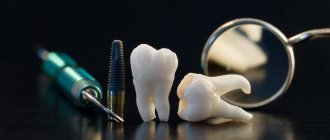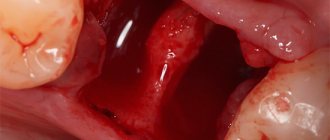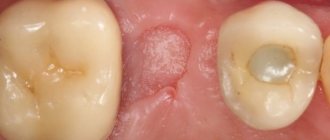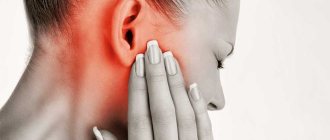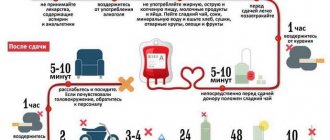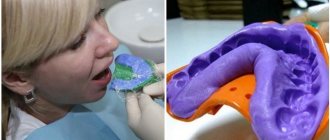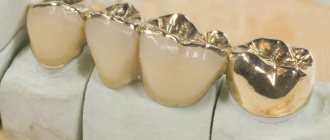Tooth extraction
Modern tooth extraction can be simple or complex, carried out using forceps, a bur or a laser device - the specific method is chosen purely based on the position of the tooth, the presence of roots, and the condition of the surrounding tissues. A separate area is tooth replantation, which allows you to return a whole and healthy tooth to its place in the event of damage to the ligaments that hold it in the socket.
Indications:
| Contraindications:
|
Tooth extraction process
Our teeth have one or more roots. Multi-rooted teeth are located on the sides; they perform all the main functional loads. Removing them involves the use of a certain technique - each of the roots is removed sequentially, otherwise the patient experiences very acute pain, and the wound takes a very long time to heal.
- administration of anesthesia, which is mandatory to reduce pain;
- removal of teeth occurs by rocking them and turning them around their axis using special forceps, or by dissecting the tissue and removing the tooth from the socket in parts;
- applying a compress to the hole;
- stitches are applied if necessary;
- The patient’s compliance with the doctor’s recommendations to shorten the rehabilitation period.
| Be sure to restore teeth after extraction | The empty space between the teeth does not look at all aesthetically pleasing; moreover, over time, the neighboring teeth noticeably shift towards the vacant space, and the bite changes. Without receiving the proper load due to the lack of a conductor (tooth root), the bone tissue atrophies and sags; subsequently, to restore teeth with implants, it will need to be built up. |
Tooth removal methods
- Simple tooth extraction is carried out using standard technology, when the damaged tooth is rocked from side to side and then removed from the socket using forceps. The operation must be performed under anesthesia to relieve pain. This method is used to remove mobile or baby teeth;
- Complex or surgical tooth extraction is performed in cases of serious damage to the teeth or intertwined roots. Complex cases also include the removal of wisdom teeth, especially those located deep in the bone tissue, under the gum. In case of complex tooth extraction, it is necessary to dissect the tissues and separate the roots of the teeth for a more gentle removal;
- Laser tooth extraction is also a surgical procedure. But it is carried out more simply, painlessly and without a difficult rehabilitation period. A laser is an analogue of a surgical scalpel, but at the same time it also allows for antibacterial treatment of tissues and promotes their rapid healing;
- Dental replantation is a procedure for removing completely or relatively healthy teeth, restoring surrounding tissues and returning the teeth back into the socket. It is carried out in the presence of cysts and granulomas, inflammation of the ligaments that hold the tooth, as well as various injuries to the jaw - but provided that the tooth is not damaged. Such operations in dentistry are performed extremely rarely, since it is very difficult to ensure successful tissue engraftment after removing a tooth from its socket.
Tooth extraction: how is it performed and how much does it cost?
When it comes to dental procedures, tooth extraction—or “pulling”—is one of the most dreaded expectations for patients. Also called exodontics, tooth extraction involves removing a tooth from the socket, the socket in which it resides in the jawbone. Before deciding to remove a tooth, the dentist will make every effort to preserve it. But still, sometimes removal is necessary.
Reasons for tooth extraction
There are several reasons to have teeth removed. They include:
- Serious damage and trauma to teeth: Some teeth are so badly decayed or physically damaged (e.g. broken, cracked) that they cannot be treated. For example, teeth affected by advanced gum disease (periodontitis) may also need to be removed. As periodontitis worsens, the teeth, supported by the surrounding bone tissue, often become loose to the point that extraction is the only option;
- misaligned/non-functioning teeth: To avoid complications that can ultimately impact your oral health, your dentist may recommend the removal of teeth that are misaligned and/or effectively useless (for example, teeth that do not have other teeth adjacent to them that are needed to to bite food);
- Orthodontic treatment: Orthodontic treatment, such as braces, may require teeth to be removed to create space needed for better alignment of teeth;
- extra teeth: Also called superfluous teeth, extra teeth can interfere with the eruption of other teeth;
- Radiation: Irradiation of the head and neck during radiation therapy may require the removal of teeth in the irradiated areas to avoid possible complications such as infection;
- Chemotherapy: Chemotherapy weakens the immune system, increasing the risk of dental infections and increasing the likelihood that some teeth will have to be removed;
- Organ transplant: Medicines that suppress immune function that are prescribed after an organ transplant may increase the chance of dental infection. Therefore, some teeth require removal before organ transplantation.
Teeth removed on a general basis
Wisdom teeth removal is one of the most common types of such operations. Many dental professionals will recommend removing wisdom teeth (third molars) before they are fully developed—usually during adolescence—to eliminate potential problems. One of the problems that may arise is the development of initially defective teeth, which, having erupted, did not receive enough space for growth. Other problems associated with defective teeth include infection, decay of adjacent teeth, poor bite behavior, and periodontitis.
Removal of some permanent teeth that have not erupted—such as canines—may be necessary to make room for orthodontic surgery.
Types of tooth extraction operations
There are two types of tooth extraction operations:
- simple extractions: these are performed on teeth that are visible in the mouth. Simple extractions are usually performed by general dentists, and most such operations are usually performed under local anesthesia, with or without the use of sedatives and sedatives;
- Surgical extractions: These are performed on teeth that cannot be easily seen or reached in the mouth, either because they are broken at the gum line or because they have not fully erupted. Performed by dentists or dental surgeons, surgical extractions require certain surgical procedures, such as removing bone, removing and/or fully or partially cutting and folding the gum tissue to expose the tooth, or breaking the tooth into pieces (called sectioning the tooth). Surgical removal can be performed under local anesthesia and/or sedation, which keeps the patient conscious. Patients with special medical conditions and young children may be placed under general anesthesia.
Preparing for tooth extraction
Before removing teeth, your dentist or oral surgeon will discuss your medical history, including your dental history, and take x-rays. Some specialists will prescribe antibiotics before and after surgery. They are more likely to be given to patients with an infection or weakened immune system, undergoing long surgery, teenagers and the elderly.
To avoid possible complications, tell your dentist about all medications—prescription, over-the-counter, and herbal—that you take. For example, aspirin slows down blood clotting; herbal infusions of gingko biloba and ginseng also affect blood clotting.
Many patients prefer to take sedatives during tooth extraction. Possible sedative solutions include nitrous oxide (“laughing gas”), internal sedatives (such as Valium), or drugs given into the body through an intravenous injection. If you drive to the dentist, you may be able to drive on the way back after nitrous oxide surgery, but you should not drive after using other types of sedatives, so make sure someone drives you home afterward. operations.
What to expect when having teeth removed?
[google]
During the visit, the dentist will numb, or anesthetize, the tooth to be removed, as well as the surrounding bone tissue and gums. Typically, anesthetics such as novocaine or lidocaine are administered to prevent discomfort.
Simple extraction: The dentist will grab the tooth with special forceps called extraction forceps, loosen the tooth, and remove it. Sometimes a surgical cutting instrument called a luxator is used, which is inserted between the tooth and gum to help loosen the tooth. Dentists also use so-called “elevators” - levers that look like small screwdrivers. Typically, the dentist will first insert an elevator between the tooth and the bone. The elevator exerts pressure on the tooth, which helps expand the dental alveolus and separate its ligaments.
Surgical extractions: These procedures are usually more complex, so the dentist may first sedate you before numbing the tooth, then use a drill, press on the tooth with an elevator or extraction forceps, and extract the tooth. In other cases, more complex surgical procedures will be needed. For example, gum and/or bone tissue may cover or surround a tooth in such a way that it is difficult for the dentist to see and/or access it. In this case, the dentist will need to trim and lift these areas of tissue, or remove them altogether. Sometimes the tooth is so firmly anchored in the alveolus that the dentist will have to cut it and remove it piece by piece.
After tooth extraction
After tooth extraction, the dentist may also apply sutures and/or attach bone tissue (natural or artificial) to the tooth extraction site. Some sutures will dissolve on their own over time, while others will be removed by your dentist, usually within a week after surgery.
Modern types of tooth extraction
While surgical cutting instruments such as scalpels and drills are still commonly used in surgical tooth extractions, dental lasers and electrosurgery are increasingly being used.
Surgical lasers are devices that emit high-energy light beams to cut tissue, while electrosurgery is a technique that uses directed heat to cut. The advantages of laser and electrical surgery for tooth extraction are that, compared to traditional scalpels and drills, they are more precise, while the likelihood of damage to adjacent tissue is reduced, as well as bleeding and discomfort, and the healing time is reduced. But the disadvantages inherent in these methods should also be noted: a higher price, a burning smell during the procedure, as well as the impossibility of using these methods directly to remove teeth.
Postoperative care
Because bleeding after a tooth extraction is normal, your dentist will ask you to bite down on a piece of gauze and hold it in your mouth for about 45 minutes to apply pressure to the surgical site and allow the blood to clot. After tooth extraction, some swelling and discomfort are also considered normal.
Cold compresses or ice cubes will help limit gum swelling. If, after the swelling goes away, you feel pain and numbness in the jaw, apply warm compresses. Try sleeping on your back so there is no pressure on your face, and placing extra pillows under your head to keep it elevated can also help. Additionally, your dentist may tell you to take an over-the-counter pain reliever such as ibuprofen (brand names Motrin or Advil) for a few days. For surgical removal—which usually causes more discomfort later—your dentist may also prescribe prescription pain relievers.
Here are some more tips for post-operative care:
- Do not rinse your mouth during the first 24 hours after tooth extraction;
- Eat a diet of soft or liquid foods (eg, milk, ice cream, mashed potatoes, pudding) on the day of tooth extraction and the next day, gradually moving to foods that are easy to chew. Chew carefully, using teeth located far from the extraction site;
- You can brush and floss all other teeth as usual, but do not touch the teeth and gums located adjacent to the place where the extracted tooth was located;
- after the first day, for at least five days after removal, thoroughly rinse the removal site with warm salt water (half a teaspoon of salt per cup of water). Do this procedure after eating, before going to bed.
What should you not do after tooth extraction?
In addition to following the post-operative care advice we've already given, you should also consider that in the period immediately following tooth extraction, you should also avoid certain activities and foods.
- Avoid anything that could dislodge the coagulated blood clot and thereby delay or completely prevent normal healing;
- Do not smoke, gargle, spit too vigorously, engage in strenuous activities, or drink through a straw for at least two days after tooth extraction;
- refrain from drinking hot drinks, as well as crunchy foods containing small seeds or grains, alcohol and carbonated soft drinks for two to three days after tooth extraction;
- Avoid brushing your gums and avoid rinsing with over-the-counter liquids (although you can rinse with homemade saline water solutions).
Possible complications
Several types of complications are possible as a result of tooth extraction. Among them:
- accidental damage to adjacent teeth;
- incomplete removal, in which the roots of the tooth remain in place. Dentists usually remove the roots to prevent infection, but sometimes it is less risky to leave a small tip;
- problems with the alignment of teeth that affect the ability to chew or the function of the jaw joint. Teeth that are out of place can cause pain, lead to involuntary grinding (bruxism), and teeth can crack or splinter under pressure from the jaw. In addition, misaligned teeth can trap food debris that is more difficult to clean, increasing the risk of tooth decay and periodontitis;
- fracture of the jaw (most often this occurs in older people suffering from osteoporosis of the jaws) caused by pressure on the jaw during tooth extraction;
- when removing the upper tooth, a hole could be made into one of the sinuses. Usually such a hole quickly heals on its own, but if this does not happen, you need to contact your dentist again;
- infections, although rare, do occur sometimes. Your dentist may prescribe antibiotics to take before and after tooth extraction if they think you are at risk for infection;
- damage to nerve fibers - although this is primarily typical for the removal of lower wisdom teeth, in general they can occur during the removal of any tooth if a nerve passes nearby. Typically caused by a drill, damage to nerve fibers is rare and usually temporary;
- Bisphosphonates—drugs used to prevent or treat osteoporosis, multiple myeloma, bone cancer, and metastases of other cancers that invade the bones—may put patients who have teeth removed at risk for osteoporosis of the jaw (rotting of the jaw bones). It is believed that bisphosphonates have an aggressive effect on teeth and bone tissue, and can stop the work of cells that destroy bone. If you are taking osteoporosis medications such as Fosamach, try to avoid tooth extraction whenever possible;
- After a tooth is removed, the opposing tooth will eventually begin to loosen in its alveolus, exposing the roots and becoming sensitive to temperature changes. Particularly common in cases where several teeth have been removed, another possible long-term effect is the thinning of the jawbone, which over time becomes more vulnerable to fractures;
- Removing teeth - especially the front ones - will have a bad effect on your appearance.
Unless it is a wisdom tooth, your dentist will likely advise you to replace the extracted tooth with an artificial appliance to avoid complications such as displacement of remaining teeth, shrinking gums and bone loss. The ideal tooth replacement would be implants; You can also choose dental bridges or dentures.
Dry tooth alveoli
Dry alveoli, a common complication after tooth extraction, occurs when a blood clot fails to form in the alveolus, or the clot that does form becomes dislodged. This exposes bone tissue and nerves to air and food. Alveolar dryness, often quite painful, usually appears within two to five days after removal and can cause halitosis and affect the sense of taste.
Alveolar dryness is most often associated with difficult or traumatic tooth extraction cases, such as the removal of lower wisdom teeth. More often than others, this happens to people over 30 years of age, smokers who do not pay attention to oral hygiene, and women (especially those taking oral contraceptives). In all but urgent cases, experts recommend that women taking oral contraceptives schedule their dental extraction appointments during the last week of their menstrual cycle, when estrogen levels are lower.
Most likely, when the socket dries out, the dentist will place a medicated swab into the socket to relieve pain and promote healing. The tampon is changed every 24 hours until the symptoms go away (this takes about five to seven days).
Duration of healing of the dental alveoli
Healing of the dental socket usually takes five to seven days. The surrounding gum area should heal completely within three to four weeks. If the jaw was damaged during tooth extraction, complete healing will take up to six months.
Cost of tooth extraction
Typically, the cost of the procedure is directly proportional to its complexity. Prices range from approximately 800 to 8,000 rubles. A simple removal of a permanent tooth costs 800 – 5,000 rubles. Surgical removal of a permanent tooth costs 2,500 – 8,000 rubles; simple removal of a baby tooth – 400 – 2,000 rubles.
Tags: tooth extraction
Previous post
Temporomandibular joint dysfunction (TMJ)
Next entry
Professional versus home whitening
Complications after removal
- Dry socket is the most common problem faced by most patients. After a wisdom tooth is removed, a lump forms in the wound - a blood clot. It is important to preserve it because it ensures rapid tissue healing. However, if it has been damaged, a “dry socket” is formed, the main symptoms of which include bad breath and an unpleasant taste, dryness in the wound, and pain. To get rid of this problem, you need to do compresses prescribed by your doctor;
- tissue tumors, redness of the gums, swelling and bleeding are normal consequences of tooth extraction, which go away on their own on the second or third day after surgery. However, if the swelling does not subside and the bleeding does not stop, you should consult a doctor;
- alveolitis and osteomyelitis - inflammation of bone tissue, which is possible due to bacteria entering the wound, as well as a weakening of the patient’s immune system. Drug therapy is required;
- sinusitis, which may be a consequence of damage to the nasal sinuses during the removal of teeth in the upper jaw;
- incomplete tooth extraction: part of the root may remain inside the wound, which will require a repeat operation to extract it.
Care after tooth extraction
After any tooth extraction, it is very important to follow all doctor’s recommendations. It is advisable to stop smoking and drinking alcoholic beverages; the foods consumed should be warm and non-spicy. Oral hygiene is a mandatory procedure, but it should be carried out very carefully - using a soft toothbrush; in the first days after removal, rinsing is not recommended so as not to damage the blood clot in the hole, but only baths with special solutions. The use of medications and treatment methods not recommended by the attending surgeon is prohibited.
Technology: Simple tooth extraction
A simple tooth extraction can also be called ordinary or typical. It rarely causes complications, since it is performed quite simply and must be performed under anesthesia, since this is a painful operation and a rare patient will be able to survive it without the use of painkillers.
The essence of the operation is to rock the tooth and then remove it from the socket using forceps. As a rule, simple tooth extraction is carried out on teeth that have one or two roots, a whole or partially damaged crown - after all, the doctor can “catch onto it” and not damage the tissue surrounding the tooth.
Indications:
- periodontal disease and periodontitis, which caused tooth mobility,
- a solid dental crown, or no more than half destroyed,
- the need to remove a healthy tooth during subsequent prosthetics or bite correction,
- jaw injuries: fractures, dislocations, bruises.
Process and stages of complex tooth extraction
It all starts with careful preparation. X-ray diagnostics are required to determine the length and shape of the roots, the depth of the tooth and the complexity of the work ahead.
If there is an inflammatory process, antibacterial therapy is prescribed the day before the procedure. In addition to local anesthesia, sedation can additionally be used to relieve the patient’s psychological stress.
Technique for complex wisdom teeth removal:
- incision of soft tissues and separation of the gums from the neck of the tooth;
- if necessary, sawing out a section of bone tissue or sawing the interroot septum;
- applying forceps to the crown, which are lowered all the way to the edge of the alveoli;
- the cheeks of the forceps are clamped and fixed without excessive pressure;
- then the tooth is rocked and removed from the socket;
- suturing the gum.
Simple tooth extraction: technology
Simple tooth extraction is carried out exclusively individually, depending on the number of tooth roots, their location and condition. But in general it consists of several main stages:
- administration of anesthesia, which is mandatory to reduce pain,
- The gum peels off half a centimeter from the surface of the tooth,
- multi-rooted teeth are removed by rocking with special forceps, single-rooted teeth - by rotating around their axis,
- after the doctor has shaken the tooth, he removes it from the socket, then applies a compress to the wound,
- After tooth extraction, it is important for the patient to follow simple recommendations so that the recovery period is as painless as possible.
Care after simple tooth extraction
After a simple tooth extraction, you will need a few minutes of rest - after all, this is a surgical operation and it is performed under strong anesthesia. You can spend them in the doctor's chair, or in the rest room of the medical center.
No food or even water is allowed for several hours. It is also worth excluding physical activity for several days. After tooth extraction surgery, you must stop smoking and brush your teeth very carefully so as not to damage the blood clot that forms at the site of the extracted tooth. If you accidentally dislodge it, a dry socket will form, which will cause an unpleasant sensation in the mouth, as well as a pungent odor.
Following simple recommendations will make the period after tooth extraction comfortable and reduce pain to a minimum.
Technology: Surgical tooth extraction
Surgical or complex tooth extraction is a more serious operation, the main purpose of which is to remove the tooth from the socket. But if in a normal procedure the tooth is gradually rocked and then removed, then in a complex operation surgical intervention is required. As a rule, the gums and periosteum are incised, and the tooth is cut into small parts using a bur or laser and then gradually removed from the socket.
Surgical tooth extraction is a more complicated operation, but you should not be afraid of it, since with a professional approach it lasts no more than half an hour and without consequences. Of course, it requires tissue incisions, but they just provide better access to the tooth root and allow it to be removed without injury or widening the socket. By the way, this is important during tooth replantation, when the tooth socket must be preserved in its original shape, since the reanimated tooth will be returned back.
Indications:
- the presence of an inflammatory process around the hole,
- periodontitis,
- tooth replantation,
- destruction of bone tissue around the tooth,
- fusion of the roots of a multi-rooted tooth,
- fusion of roots with bone tissue,
- severely damaged tooth apex,
- dental cyst and granuloma,
- unerupted teeth, especially wisdom teeth,
- removal of baby teeth in young children,
- curvature of tooth roots.
Contraindications:
- pregnancy,
- blood diseases,
- diabetes,
- inability to administer anesthesia,
- diseases of the cardiovascular system.
Chapter 8. TOOTH EXTRACTION OPERATION
Tooth extraction
(extractio dentis)
is one of the most common operations in outpatient dental practice.
Tooth extraction is a forced rupture of the tissues connecting the root of the tooth with the walls of the socket and gum, and its removal from the alveoli.
The tooth extraction operation has a number of features. It can be either incredibly simple and easy, or complex, sometimes lasting for hours, requiring a complex set of instruments, general anesthesia and hospital conditions. When a tooth is removed, a fracture occurs in the socket, the walls of which inevitably move apart with open access to the spongy substance and bone marrow. In some cases, complications may arise, both local (inflammatory phenomena) and general - disruption of the cardiovascular, digestive and other systems.
INDICATIONS AND CONTRAINDICATIONS FOR TOOTH EXTRACTION OPERATION
There are indications and contraindications for tooth extraction surgery (Diagram 8.1, Tables 8.1, 8.2).
Scheme 8.1.
Indications and contraindications for tooth extraction surgery
Table 8.1.
Indications for tooth extraction surgery
| Indications | Reasons for deletion | Justifications |
| Urgent | Acute periapical inflammatory processes in the periodontium, causing osteomyelitis, abscess, phlegmon, sinusitis, lymphadenitis | Delay leads to progression of the inflammatory process, aggravating the general condition of the patient up to sepsis |
| Longitudinal fracture of a tooth exposing the pulp | The integrity of the tooth cannot be restored using therapeutic and orthopedic methods. | |
| Tooth in jaw fracture line | Prevents the reposition of jaw fragments. Promotes inflammatory-traumatic osteomyelitis | |
| Planned | Failure of endodontic treatment for chronic forms of periodontitis | Leads to immunodeficiency and chronic sepsis |
| Significant or complete destruction of the tooth crown, degree III mobility | Impossibility of therapeutic and orthopedic treatment | |
| Teeth that did not erupt on time or partially erupted (impacted and semi-impacted, dystopic in the presence of clinical manifestations) | Cause odontalgia, inflammatory processes in the mucous membrane of the oral cavity, tongue, chronic injury of the oral mucosa | |
| Incorrectly positioned teeth, protruded as a result of the loss of an antagonist (Popov-Godon phenomenon), converging, diverging, supernumerary teeth located outside the dental arch | Inability to correct the occlusal surface, difficulty chewing |
Table 8.2.
Contraindications to tooth extraction surgery
| Contraindications | Justifications | |
| Are common | Cardiovascular (pre-infarction conditions and within 3-6 months after myocardial infarction, hypertension during a crisis, coronary heart disease with frequent attacks of angina pectoris, etc., taking anticoagulants) | Requires special training in an anesthesia room or hospital setting |
| Blood disease - hemophilia, hemorrhagic diathesis, anemia, leukemia | Requires special training in an anesthesia room or hospital setting | |
| Infectious diseases (influenza, acute respiratory disease, erysipelas), pneumonia | Decreased body resistance. The operation is carried out after treatment by specialists | |
| Traumatic brain injury (bruise, concussion) | Additional trauma is associated with cerebral edema. The operation is performed in a neurosurgical department | |
| Acute diseases of the gastrointestinal tract, liver, kidneys, diabetes mellitus, etc. | The operation is carried out only after treatment by specialists and consultation with an anesthesiologist. | |
| The period before and during menstruation | Disturbance of the blood coagulation system - possible bleeding | |
| Pregnancy | Optimal timing for surgical debridement is from the 3rd to the 7th month of pregnancy | |
End of table. 8.2
| Contraindications | Justifications | |
| Local | A tooth located in the area of a malignant or benign tumor of the alveolar process | Possibility of malignancy or spread of metastases |
| Conducting radiation therapy for malignant tumors in the oral cavity | Possibility of radiation necrosis | |
| Ulcerative-necrotic processes in the oral cavity | Spread of necrosis | |
MEASURES TAKEN BEFORE TOOTH EXTRACTION OPERATION
Examination.
Before proceeding with tooth extraction, it is necessary to examine the patient: find out complaints, the presence of previous and concomitant diseases, collect an anamnesis of the disease, and allergological status. Data from the survey and examination of the external and oral cavity allow us to identify the presence of indications for surgery (Table 8.3).
Table 8.3.
Activities taken before tooth extraction surgery
| Sequence of stages | Execution method | Rationale |
| Conversation with the patient. Examination of the tooth to be removed | Establishing psychological contact with the patient. When examining a tooth, determine the degree of destruction of the crown and its mobility, and determine the presence of inflammation. Carefully examine the X-ray data | Reducing psycho-emotional stress to prevent fainting, collapse, shock. The examination allows you to identify indications for tooth extraction, outline a plan for surgical intervention, choose a method of pain relief, determine the surgical technique and the necessary instruments. An x-ray allows you to determine the condition of the bone tissue in the root area, the size of resorption, the relationship of the roots with the bottom of the nasal cavity, sinuses, and mandibular canal |
| Preparing the mouth before removal | Removal of dental plaque from the causative and adjacent teeth. Antiseptic mouth rinse | Prevention of possible inflammatory complications |
| Preparing the patient in the chair | When removing teeth in the upper jaw, the surgical field is at the level of the surgeon’s shoulder joint (Fig. 8.1). The patient's head is thrown back and turned in the opposite direction. When removing teeth in the lower jaw, the surgical field is located at the level of the elbow joint of the surgeon’s hand (Fig. 8.2, 8.3). The patient's position is semi-recumbent, the headrest is vertical | The correct position of the patient in the chair ensures optimal visibility of the surgical field and the tooth extraction operation. |
End of table. 8.3
| Sequence of stages | Execution method | Rationale |
| Lighting | Directing the beam of light from a dental lamp into the surgical field | The operation requires good natural and artificial lighting. |
| Preparing the surgeon's hands in compliance with the rules of asepsis | Before the operation, you must wash your hands with soap and a brush in running water, dry with a towel, and wear sterile disposable gloves. | To avoid contamination of microorganisms in the surgical field, the doctor performs all manipulations wearing a mask, safety glasses, and sterile disposable gloves. |
| Preparing instruments for inspection | The sterile tray contains tweezers, a spatula and sterile gauze swabs. A nurse gives a tray with sterile instruments | |
| Anesthesia | Carrying out adequate anesthesia according to indications | Prevention of painful shock |
| Tools and materials for tooth extraction surgery | The sterile tray contains tweezers, a spatula, sterile gauze swabs, a carpule syringe, injection needles, carpules with anesthetic, a sickle-shaped smoother, forceps and elevators according to the tooth or root being removed, and a curettage spoon. A nurse gives a tray with sterile instruments | |
| Instruments and materials required in case of complex removal and local complications of the operation | Additional tools and materials: hemostatic sponge, iodoform turunda, suture material, needle holder, scissors, scalpel, burs, straight tip and Farabeuf hook. A nurse gives instruments urgently during a complicated operation. |
The doctor must carefully examine the tooth to be removed. When examining the crown, you need to establish the degree of its destruction, the anomaly of the tooth and, depending on this, select the appropriate forceps or elevators, determine the presence of inflammation, and the degree of pathological mobility of the tooth. Using an x-ray, it is necessary to establish the condition of the bone tissue in the root area, the nature and size of bone resorption or the type and size of hypercementosis, the number, shape, size and degree of divergence or fusion of the roots of the tooth, as well as their relationship with the bottom of the nasal cavity, the maxillary sinus, the mandibular canal . It is important to find out whether the roots of the tooth are connected by a septum, whether it is strong, and whether it is advisable to pre-sever the roots.
Surgical tooth removal: technology
Surgical tooth extraction must be performed under anesthesia. In some cases, anesthesia may be required - but this is purely at the request of the patient or for certain medical reasons. In general, even with the most complex surgery, ordinary anesthesia is always sufficient, only deeper than that used for conventional dental treatment.
Complex tooth extractions are usually completely painless. But anesthesia may not work if the day before you tried to relieve pain with painkillers. In addition, the anesthetic may not be useful if the patient is taking narcotics.
The process of tooth extraction is carried out exclusively individually, since teeth have different numbers of roots, position and physiological characteristics. But, as a rule, treatment consists of several standard steps:
- conducting an x-ray examination, especially if the tooth has not erupted,
- administration of anesthesia,
- The gum is cut using a surgical scalpel, and an incision is also made in the periosteum to provide access to the tooth root. As a rule, access is created from the side, but if the tooth has not erupted completely and is located under the gum, then the tissue will also have to be cut from above,
- Using a drill, the tooth is divided into several parts - the crown is separated from the root, removed, and then the root is removed from the socket. If the root is firmly connected to the bone tissue, then you will also have to carry out the procedure of sawing off and separating the two parts,
- the wound is washed with special antiseptic solutions,
- after the operation, the freed space in the bone tissue can be filled with artificial bone materials, or simply covered with a barrier membrane, which will protect the space from the entry of bacteria and the proliferation of gingival cells,
- The gum flap is returned to its place and fixed with sutures.
Immediately after the operation, you need to rest for at least 30 minutes - as a rule, you can do this directly in the clinic. After tooth extraction, a mandatory re-examination of the oral cavity and the condition of the wound after surgery is prescribed. As a rule, you will have to visit the dentist 1-2 days after treatment.
Tooth structure
Before the operation, many do not even know what a tooth neck is. Therefore, before finding out how the process of tooth extraction goes, we need to understand its structure. Our small organs can:
- Bite and chew food.
- Improve the functioning of the digestive system. After all, well-chopped food is good for our stomach.
- Shape sound. For example, the sound “C” is made using a stream of air passed through tightly clenched teeth.
- Attract attention. Yes Yes! Beautiful and well-groomed teeth always arouse interest.
A healthy person has 32 teeth in the oral cavity. They are divided into 4 types:
- Four upper and four lower teeth. They are located in the center and have a cutting edge. They are called incisors. We use them to bite off food.
- Next to them are fangs. Their pointed appearance helps us tear off pieces of food.
- Premolars are responsible for grinding food. Their shape resembles a prism.
- Following the premolars are the largest teeth, the molars. They are engaged in chewing and grinding food.
Sometimes some teeth do not erupt completely and remain in this form throughout a person’s life. These teeth do not bother some people, while others try to remove them through surgery.
The tooth is made of cement, periodontal tissue and pulp. Cementum is similar in structure to the jaw bone and is the main basis of our teeth. The periodontium secures the tooth in the socket, and the pulp receives all irritating factors and delivers nutrients to the active organ.
This small organ consists of the root, neck of the tooth and crown. The structure can be seen in more detail in the picture.
